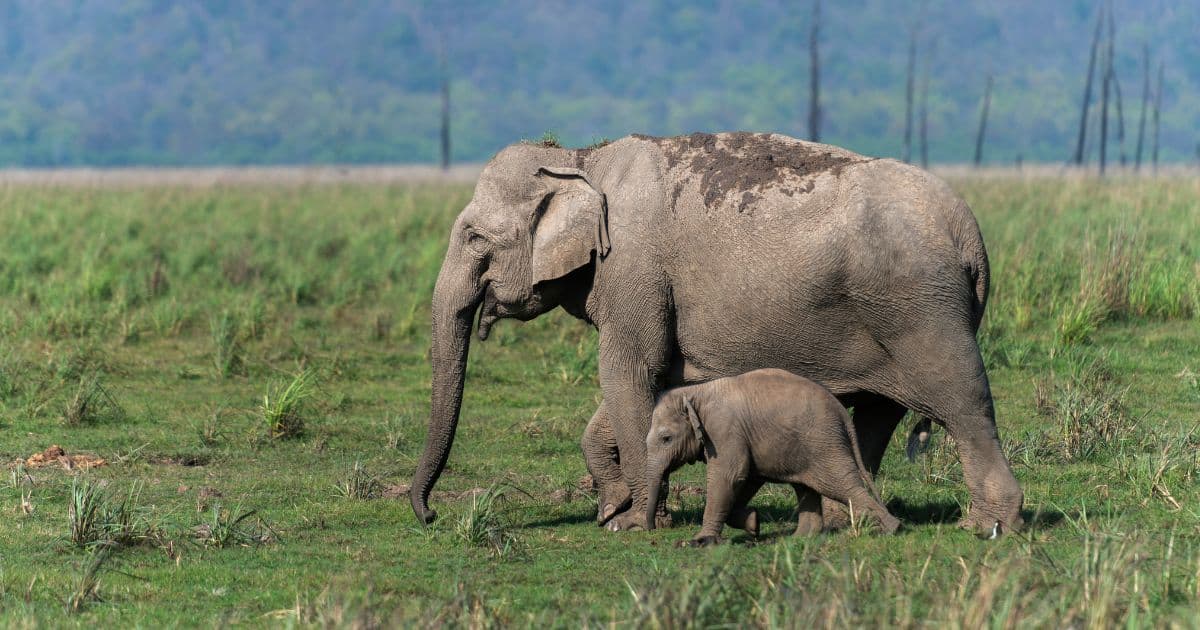India, with its vast and diverse landscapes, offers an array of breathtaking natural experiences that captivate wildlife enthusiasts and nature lovers alike. From the dense forests of the north to the tropical backwaters of the south, each region presents unique ecosystems teeming with wildlife and natural beauty.
Here are five of the best nature encounters in India that provide visitors with unforgettable experiences in the wild.

Jim Corbett National Park
Located in the foothills of the Himalayas in Uttarakhand, Jim Corbett National Park is one of India’s most renowned national parks and a haven for wildlife enthusiasts. Established in 1936 as India’s first national park, it is named after the legendary British hunter-turned-conservationist, Jim Corbett. The park is famous for its significant population of Bengal tigers, although sightings can vary with the seasons. Visitors can explore this lush landscape through jeep safaris, which offer a chance to see not only tigers but also elephants, leopards, sloth bears, and hundreds of bird species. The park’s diverse terrain, which includes riverine belts, hills, marshy depressions, and grasslands, provides a rich tapestry of environments to discover.
Ranthambore National Park
Ranthambore National Park in Rajasthan is one of the prime examples of India’s conservation efforts and is particularly known for its tiger population. The park was once the hunting grounds for the Maharajas of Jaipur, and today, it is a major wildlife tourist attraction. Its landscapes are dominated by the imposing Ranthambore Fort, around which the park’s life thrives. In addition to tigers, the park is home to various species of animals, including leopards, hyenas, sloth bears, and a variety of deer and monkey species. The best time to visit Ranthambore is during the cooler months from October to April when the vegetation is sparse and wildlife sightings are more frequent.
Kaziranga National Park
Situated in the state of Assam in northeastern India, Kaziranga National Park is a UNESCO World Heritage Site famous for its population of Indian one-horned rhinoceroses. The park hosts two-thirds of the world’s total population of these rhinos, making it the best place on earth to see them in their natural habitat. Kaziranga is also recognized for its significant achievements in conservation. Besides the iconic rhinos, the park supports a range of wild species including tigers, elephants, panthers, and bears, as well as thousands of birds. The park’s wetlands are a birdwatcher’s paradise, especially during the winter months when migratory birds are present.
Sundarbans National Park
The Sundarbans, stretching across parts of West Bengal in India and Bangladesh, is the largest mangrove forest in the world and a UNESCO World Heritage Site. This unique ecosystem is intersected by a complex network of tidal waterways, small islands, and mudflats, and is famous for its conservation of the Bengal tiger. The tigers here are adapted to an almost aquatic lifestyle, swimming between islands in this intricate maze of channels. The forest is also rich in bird life and other wildlife, including the saltwater crocodile and the endangered Irrawaddy dolphin. Boat safaris offer a unique way to explore the narrow creeks and hidden corners of the forest, making for a thrilling adventure.
Valley of Flowers National Park
Nestled high in West Himalaya, the Valley of Flowers National Park is renowned for its meadows of endemic alpine flowers and outstanding natural beauty. This picturesque national park, located in Uttarakhand, is accessible only by foot and is open to visitors only from June to October, when the flowers are in full bloom. The landscape is dominated by rugged mountain wilderness, and this park is home to rare and endangered animals, including the Asiatic black bear, snow leopard, brown bear, and blue sheep. The gentle landscape of the Valley of Flowers National Park is contrasted by the rugged mountain wilderness of the Nanda Devi National Park to the east, and together, they encompass a unique transition zone between the mountain ranges of the Zanskar and Great Himalayas.
Conclusion
India’s top nature encounters offer a remarkable diversity that reflects the country’s vast geographical spread and its rich natural heritage. Each destination provides a unique window into India’s wildlife and natural landscapes, from the tiger-filled forests of Ranthambore and Jim Corbett to the rhino havens of Kaziranga, the mysterious mangroves of Sundarbans, and the floral spectacles of the Valley of Flowers. These protected areas not only serve as crucial sanctuaries for wildlife but also offer some of the most incredible nature experiences in the world, making them must-visit destinations for anyone looking to explore India’s wild side
